
It’s a New Year and with a good chuck of Japan's spectacular fire festivals held in January, we can take a look at 10 of the most famous from across the country and months to come. Permission to fire away!
Japan boasts an exciting variety of fire festivals (火祭り, hi matsuri) throughout the year that make for incredibly memorable experiences whether you're a fan of fire or not. Japanese fire festivals often have incredible turnouts, both participant- and crowd-wise, and are always accompanied by an enormous range of delicious food served at the many "yatai" (屋台, food stalls) that often line the procession's streets. We take a look at 10 famous Japanese fire festivals from across the country that you should visit!
Oniyo Fire Festival
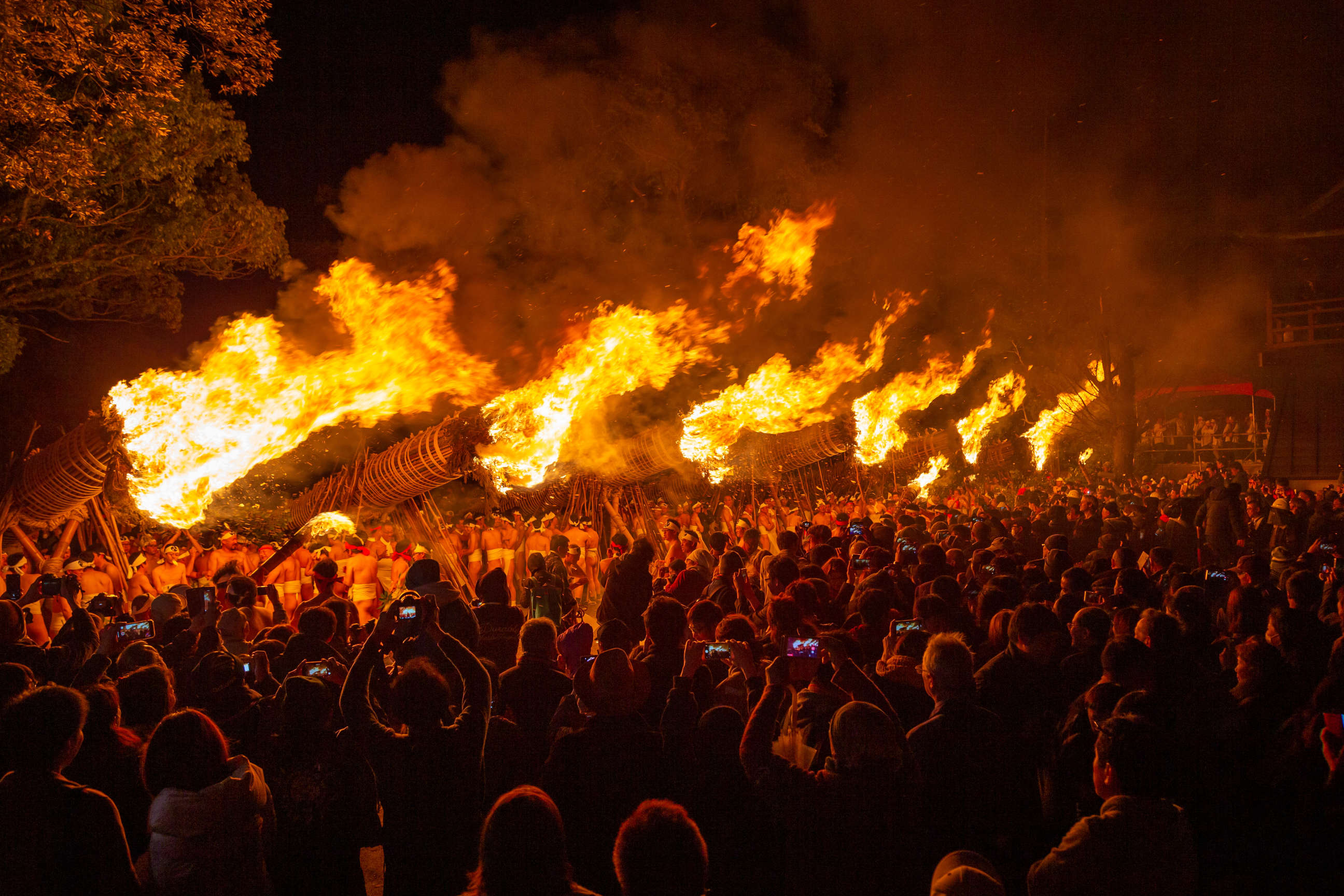
If you're keen to experience one of the biggest and best fire festivals Japan has to offer then Oniyo Fire Festival (鬼夜火祭り), held on January 7 at Daizenji Tamataregu Shrine in Kurume, Fukuoka Prefecture is an absolute must-see. The ceremony is said to have been first held some 1,600 years ago to exorcise evil spirits and has become one of the country's top three fire festivals - it's even designated an Important Intangible Folk Cultural Asset by the Japanese Government.
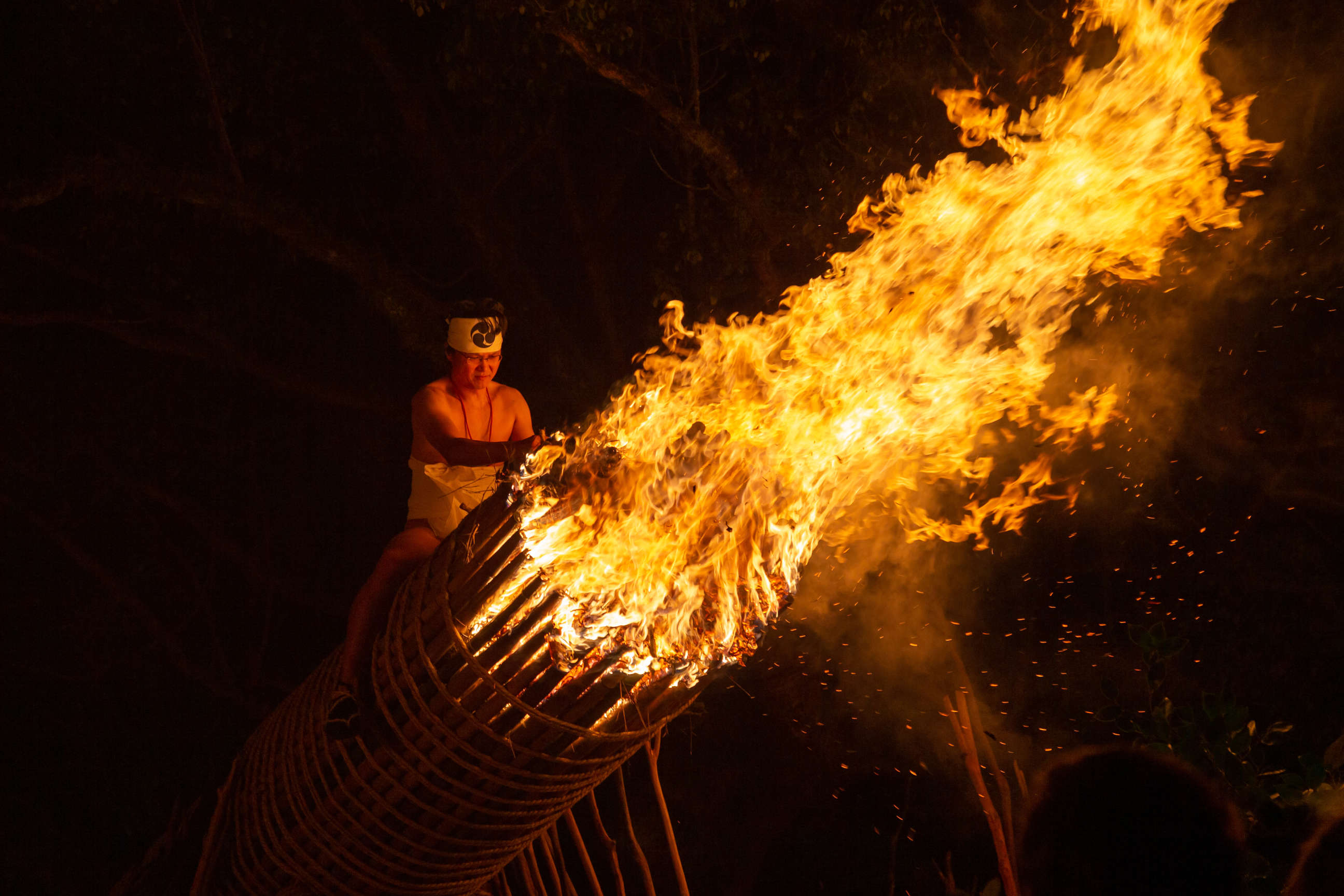
After an initial seven-day period in which the fire is lit and then closely guarded, a procession then transfers the "devil fire" to six enormous torches each 13 meters long and weighing up to 1.2 tonnes! Once these huge torches are lit the festival reaches fever-pitch as men climb on top of the torches and dance in a seemingly mad frenzy. These torches are then carried around the shrine's grounds for several hours before being laid to rest at its edges.
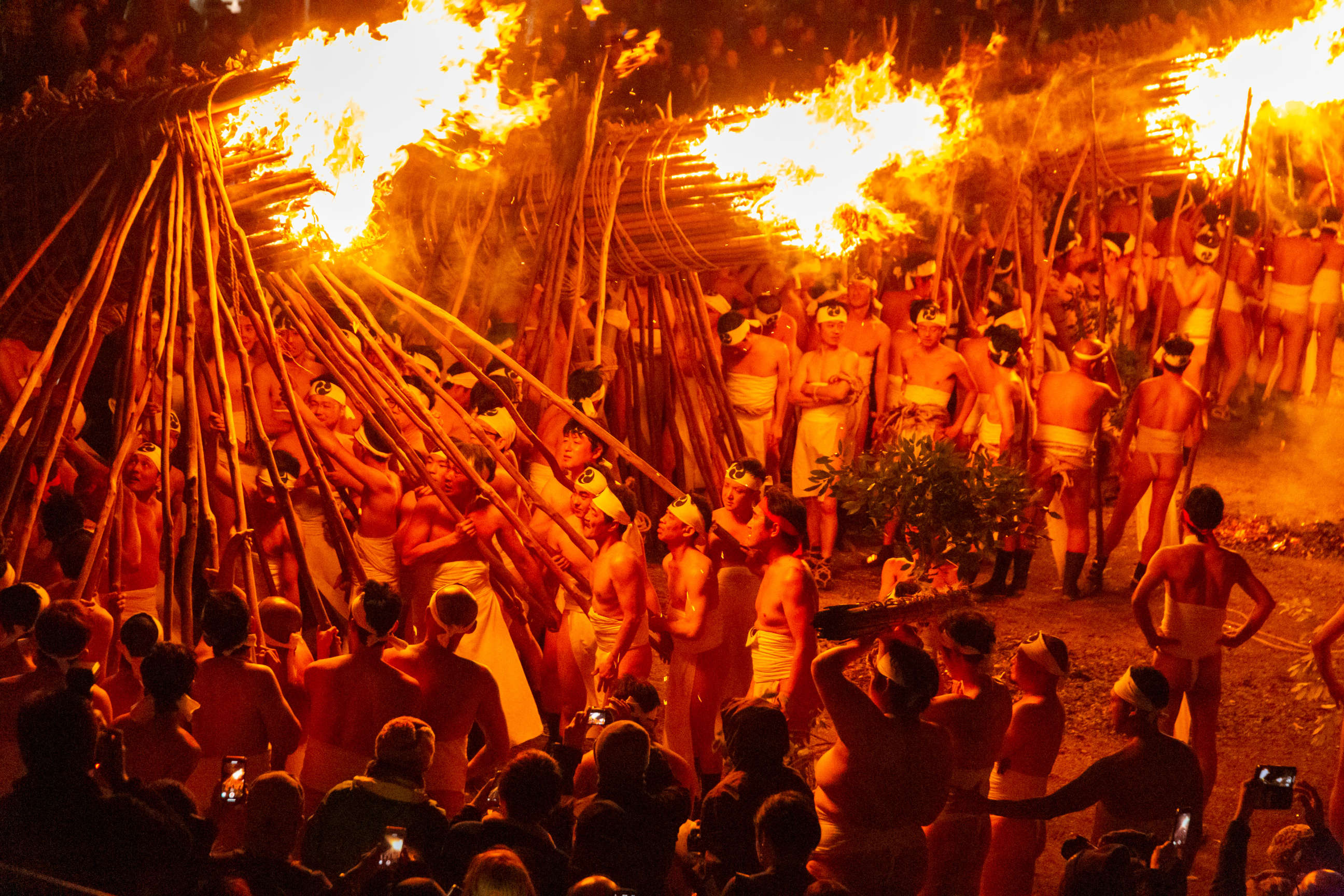
Worried about all the ash and embers from the torches? You shouldn't be - it's in fact considered good luck if they fall on you! That being said, be careful not to burn yourself or your clothes - it's not uncommon for small holes to be burnt through. Whilst that might sound a bit bothersome, remember it could be worse - you could be wearing only a single loincloth like the festival's participants! That's right, warmed only by the heat of the torches the men brave near freezing temperatures and maybe even worse - the festival goes no matter the weather.
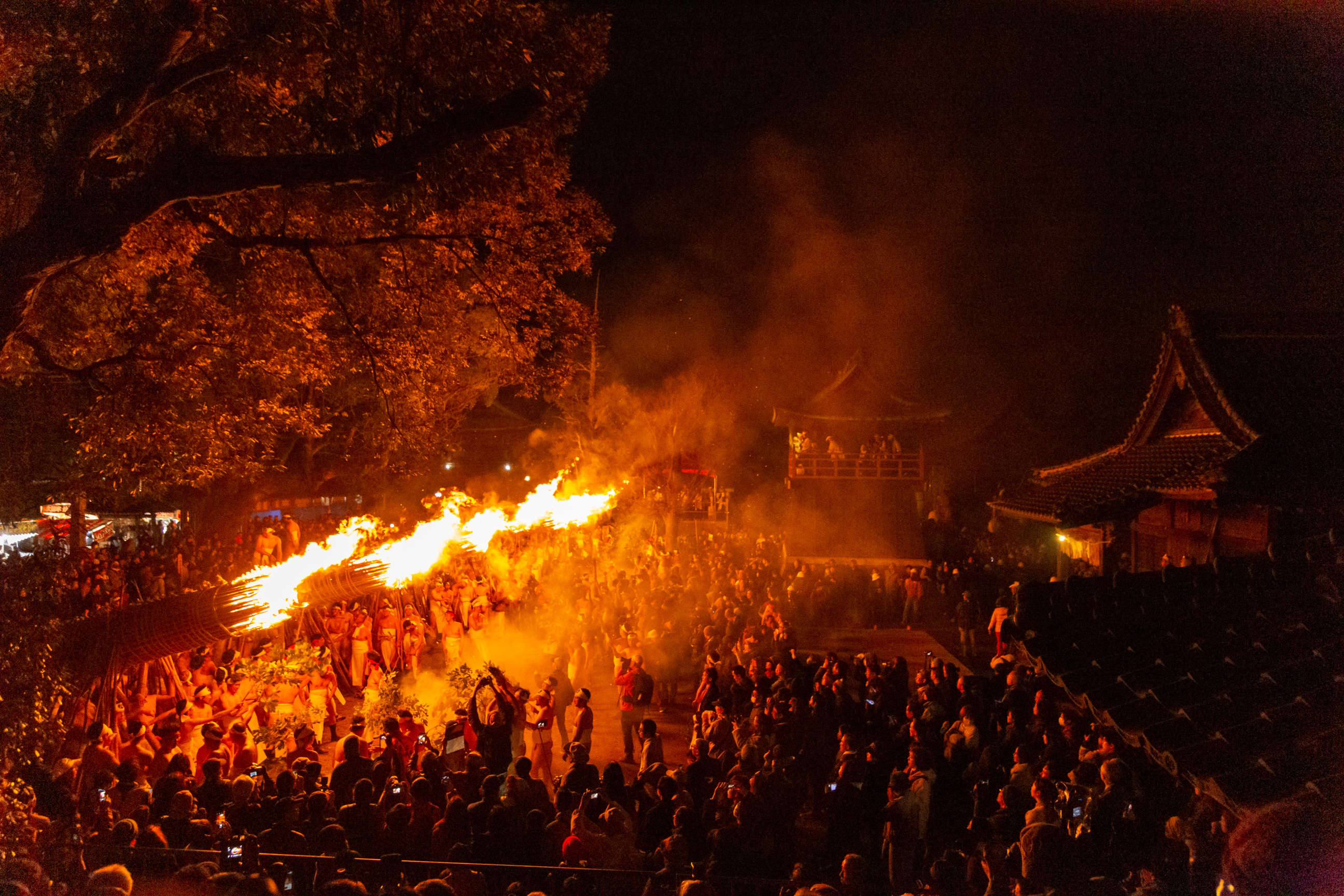
Dōsojin Fire Festival
Held on January 15 at Nozawa Onsen, Nagano Prefecture, the Dōsojin Fire Festival (道祖神祭り) is another Japanese fire festival that verges on the boundaries of madness and is as Charlie Brooker described it, “a cross between an oil rig disaster and the finale of the Wicker Man!” Make no mistake, this festival would never ever be allowed to happen here in the UK.
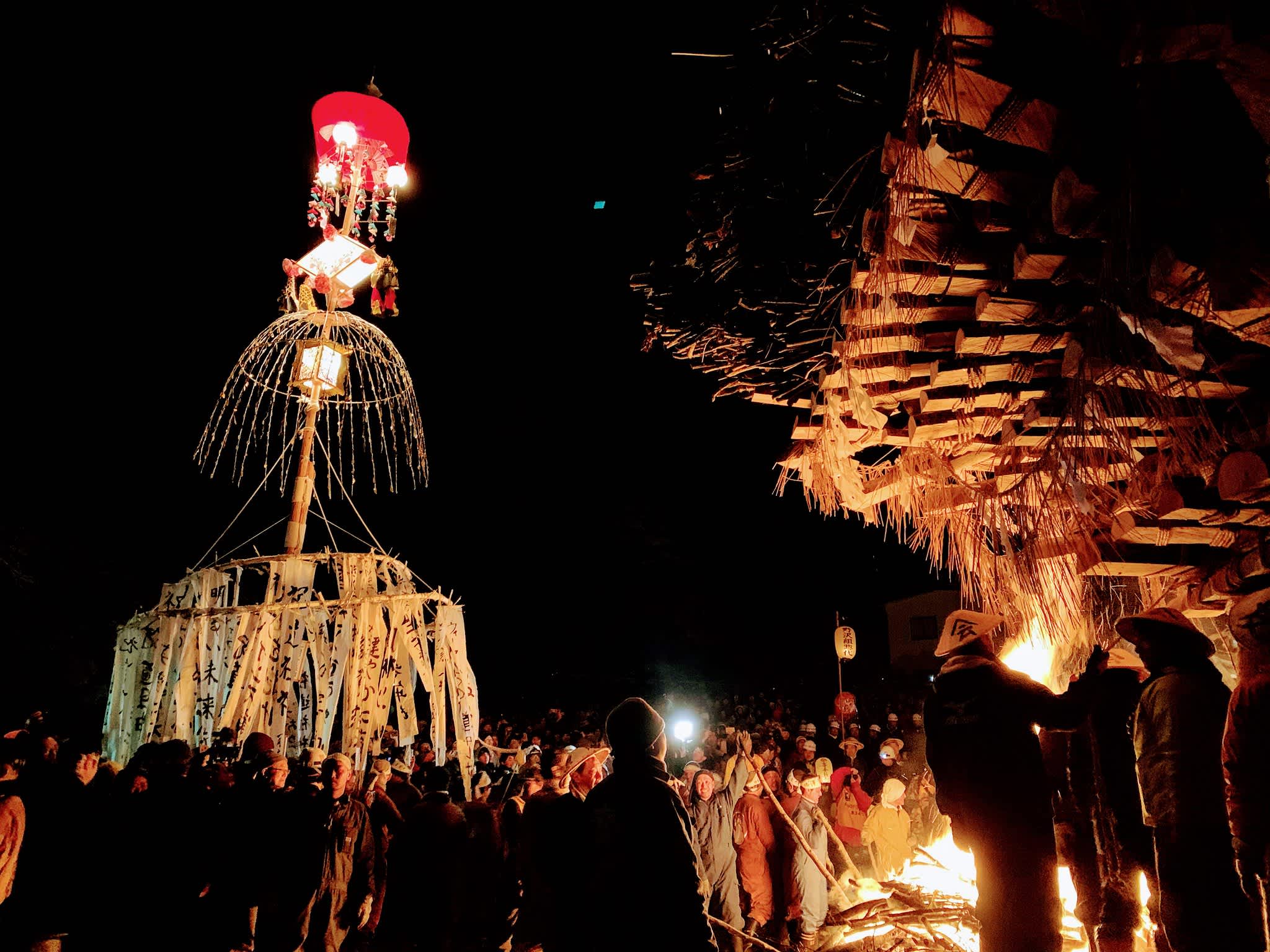
There are a number of factors that have earned Dōsojin Fire Festival the title of one of the country's most exciting festivals and the designation as an Important Intangible Folk Cultural Asset by the Japanese Government: snow, sake, and fire. The festivities first begin with the ritual drinking of copious amounts of sake by the village's 25- and 42-year old men - the superstition being that the two ages are "unlucky" (厄年, yakudoshi) - to celebrate the birth of a family’s first child, to dispel evil spirits and also to pray for happy marriage. As the sun sets the 42-year old men then drunkenly climb to a "nest-like area" at the top of a large wooden shrine where they stand, sing and shout, whilst the 25-year old men form a perimeter down below. The madness then begins when the other men in the village attempt to torch the shrine by violently jostling with its defenders and throwing flaming torches at the structure. The guards fight back in a drunken fury until the shrine finally catches light, and those above must scramble to safety as the shrine goes up in flames.
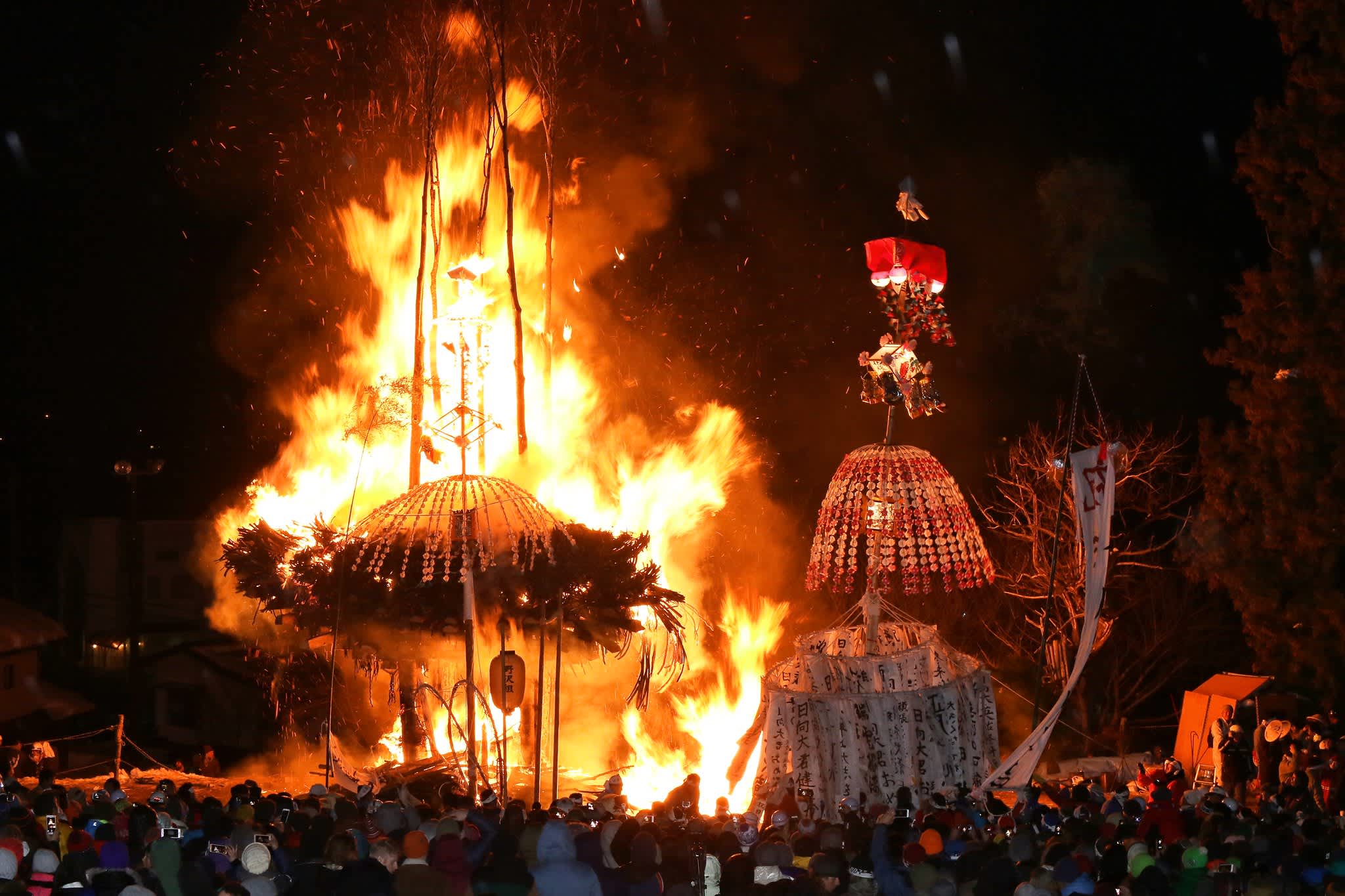
Wakakusa Yamayaki
Held annually on the fourth Saturday of January in Nara, Nara Prefecture, Wakakusa Yamayaki (若草山焼き) is a real sight to behold; after a colourful bout of fireworks, the grass on Mt. Wakakusa is set alight, creating an inferno visible from across the city.
Whilst Wakakusa Yamayaki has been practised for centuries, its precise origins remain unknown.One theory claims the fire was the result of a dispute between Tōdai-ji Temple and Kōfuku-ji Temple, whilst another claims the fire was intended to drive away wild boars.
The festival officially begins at noon, after which festival-goers can watch or try their hand at a variety of minor events around the base of the mountain. One of the most notable minor attractions is the throwing competition of sembei (せんべい, giant rice crackers) - sembei being the famous snack that the deer of Nara love so much! Fireworks are then set off at dusk, filling the sky with colour before it is inevitably filled with fire and smoke - the festival's finale - Wakakusa Yamayaki. The fire typically takes 30 minutes to one hour to burn the entirety of the mountain's grass, though if the grass is wet it can take longer or burn incompletely.
Otō Matsuri Fire Festival
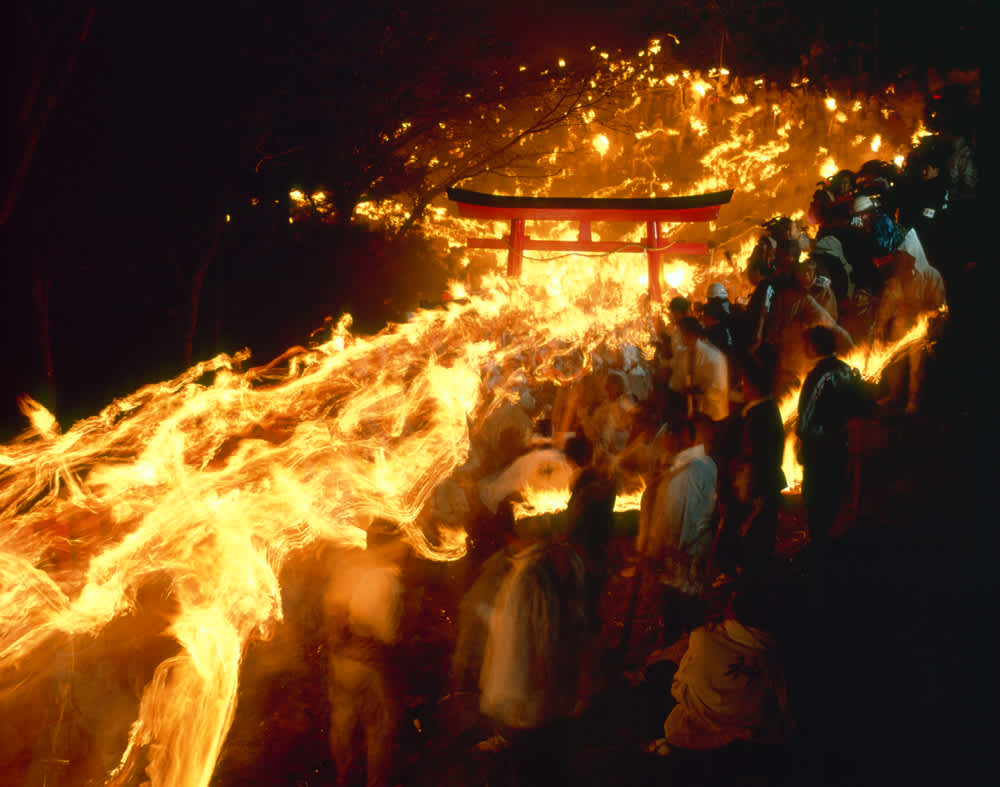
The Otō Matsuri Fire Festival (お燈祭り) is an ancient festival steeped in history; for 1,400 years, the steep stone staircase leading up to the spiritual sanctuary of Kamikura Shrine, a UNESCO World Heritage Site in Shingu, Wakayama Prefecture, has been the stage for this spectacular event on February 6.
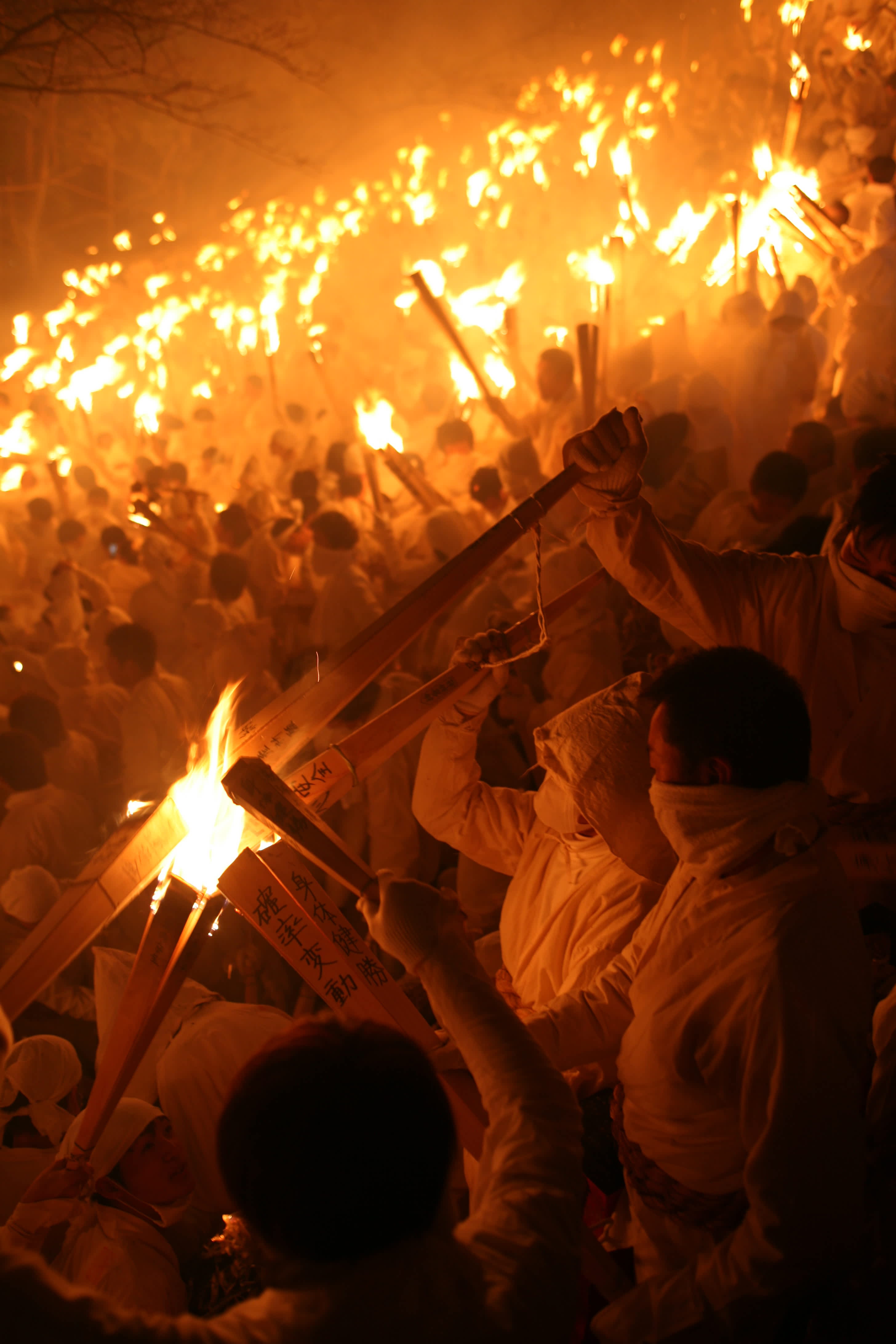
A purification ceremony with prayers made for a good harvest, the Otō Matsuri Fire Festival in fact begins with shiogori (潮垢離), a saltwater baptism meant to cleanse body and mind; the men who will later race down Chihogamine Mountain, referred to as Noboriko (上り子), must first enter the cold waters of the Pacific Ocean wearing only loincloths! Then comes the long ascent to Kamikura Shrine at the top of the mountain. As the sun sets, the 2000 or so Noboriko wait for their torches to be lit by the sacred flame before they're able to set off down the mountain, each jostling with the other in the hope that they will reach the bottom first. The Noboriko's blazing torches appear to transform the mountain's steep path into a cascading river of fire or even a descending dragon according to a local folk song. The festival's tradition bars women from the mountain on the day but views of this incredibly unique spectacle are possible from the town below.
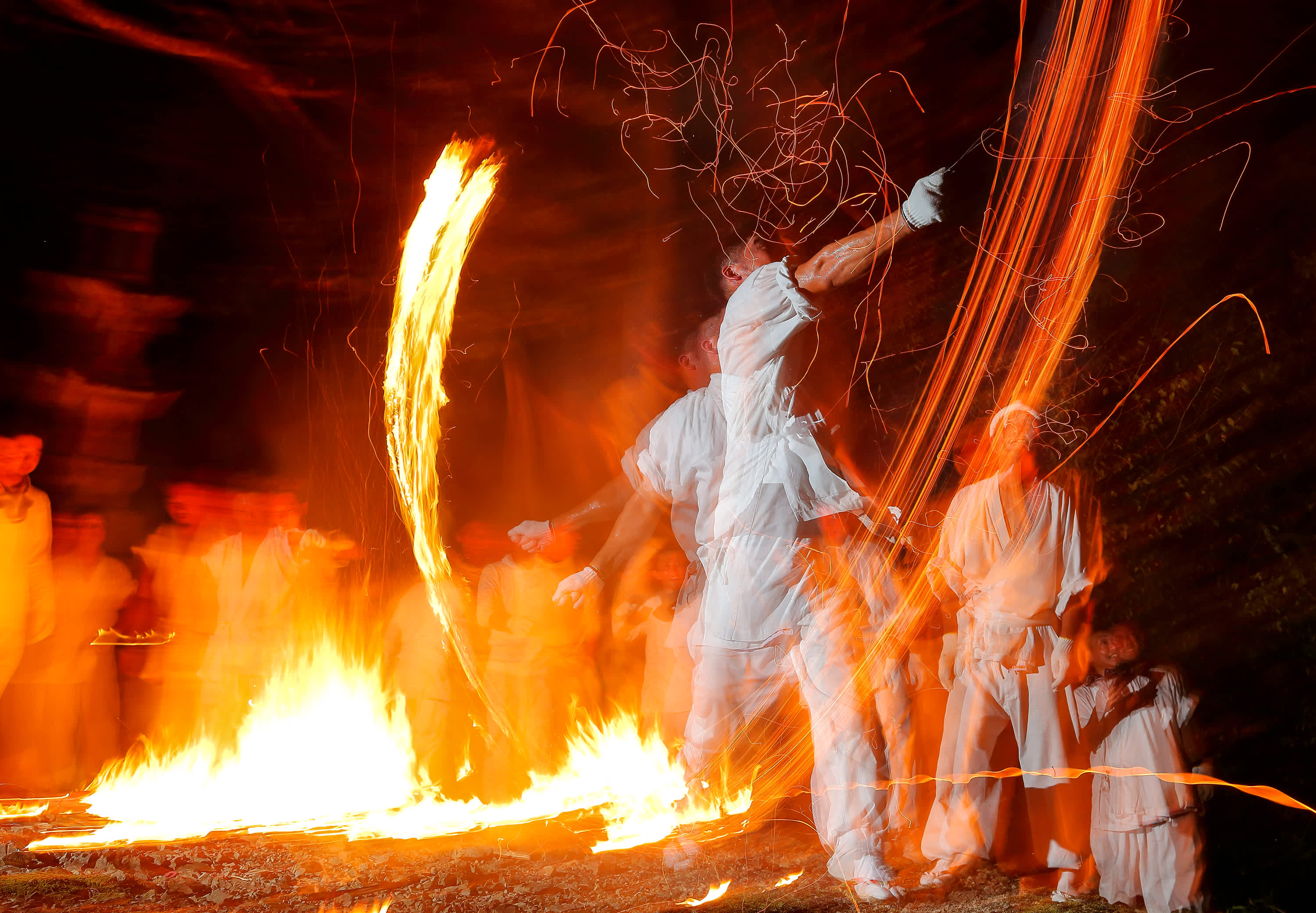
Nachi Fire Festival
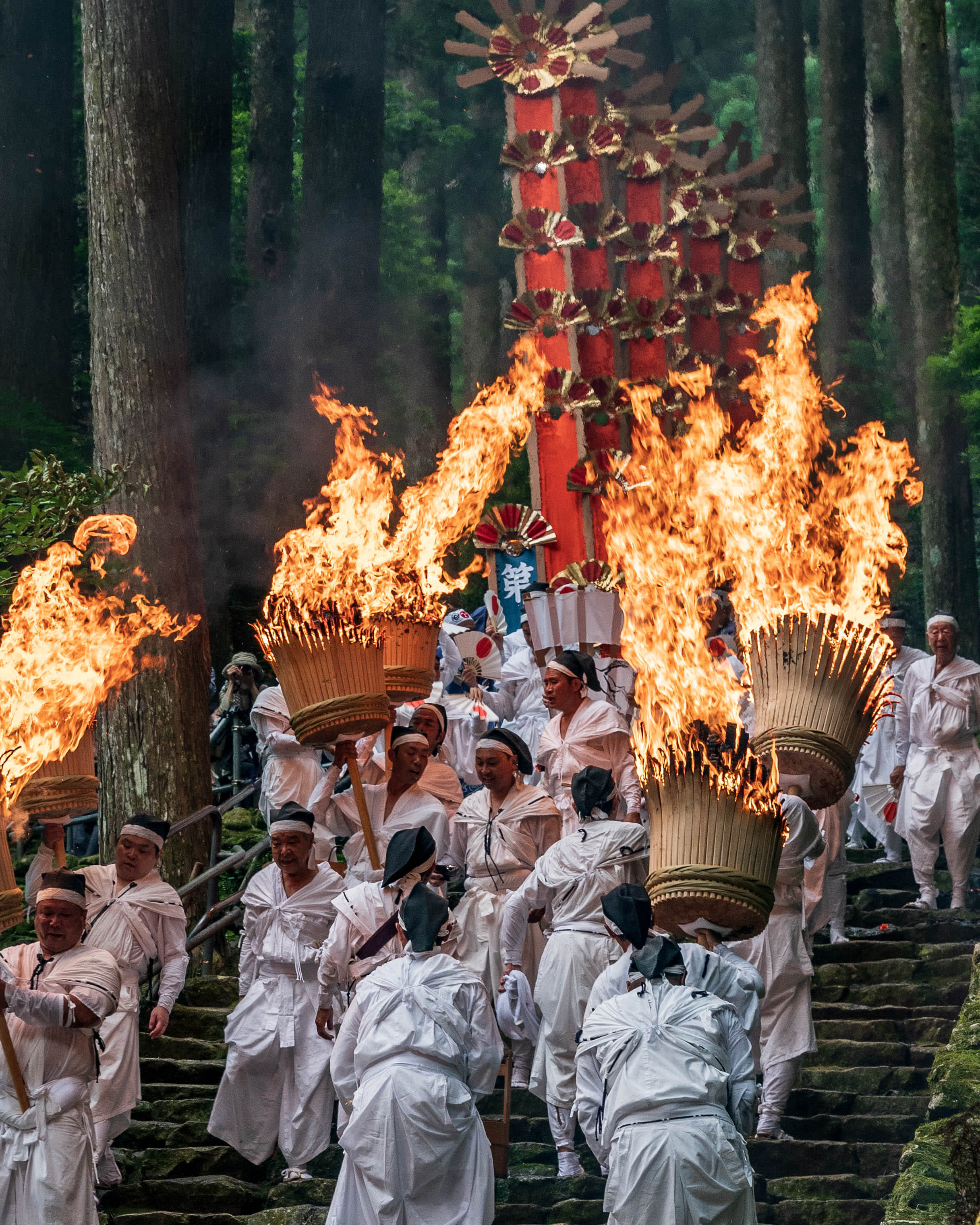
The stone steps connecting the Grand Shrine of Kumano Nachi Taisha and the nearby Nachi Falls, a UNESCO World Heritage Site in Nachikatsuura, Wakayama Prefecture typically give rise to a tranquil and serene atmosphere but on July 14 during the Nachi Fire Festival (那智の火祭り), another of Japan's three major fire festivals, they are engulfed in flame.
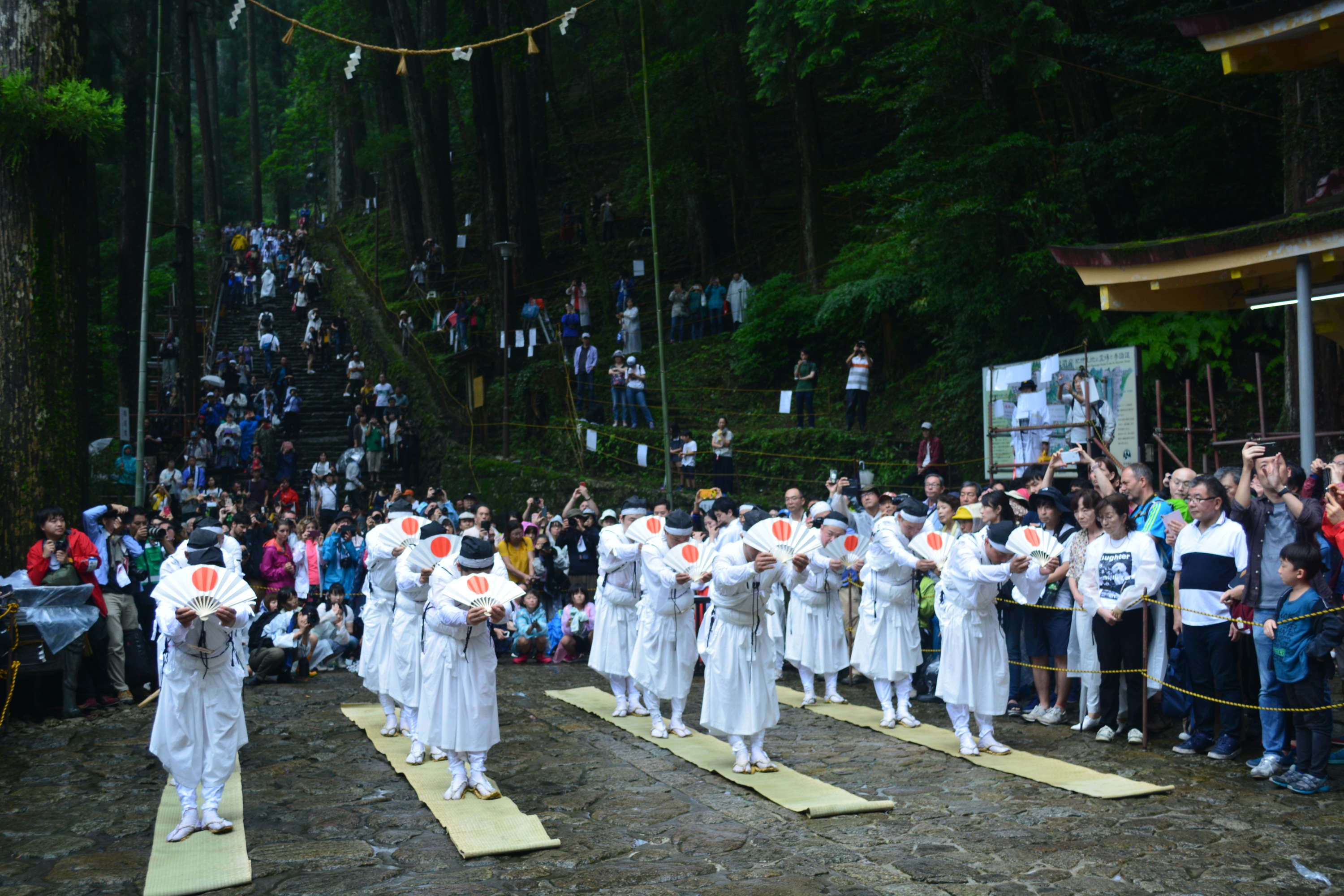
The Nachi Fire Festival, also known as the Nachi no Ogi Festival (那智の扇祭り), is a sacred ritual where the 12 deities enshrined at the Grand Shrine of Kumano Nachi Taisha each ride a 6m-high portable ogi mikoshi (扇神輿) shrine decorated with fans for a return visit to the Nachi Falls, their former enshrined residence and Japan’s highest single-drop waterfall at 133m. Amidst this lively procession other shrine parishioners, also dressed in white, chant aloud and walk the uneven stone steps whilst carrying a total of 12 huge flaming torches weighing close to 50kg! Each of these torches is said to represent one of the 12 deities' spirits whilst also being used to purify the path, “burning” away the past year's sins.
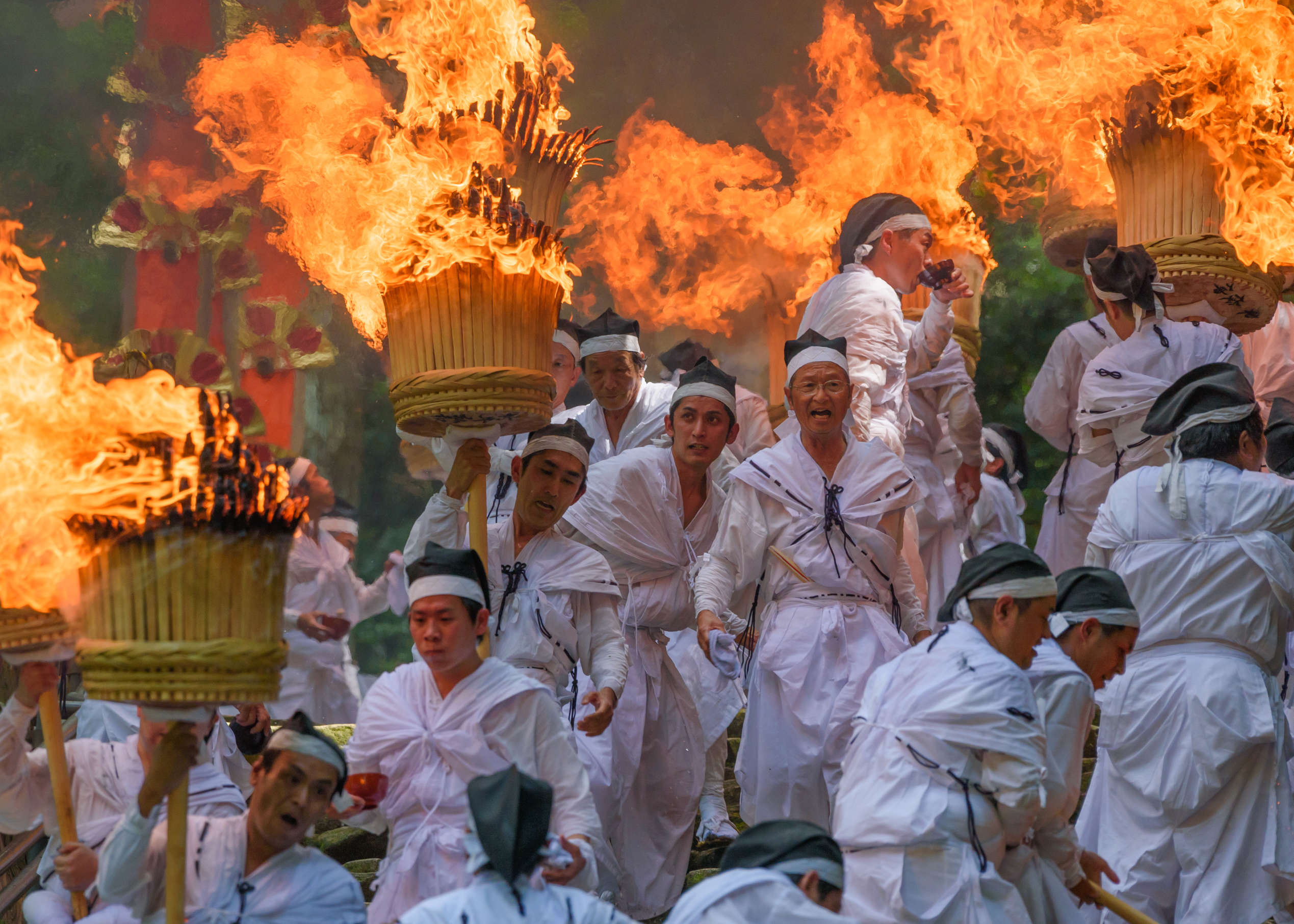
Gozan Fire Festival
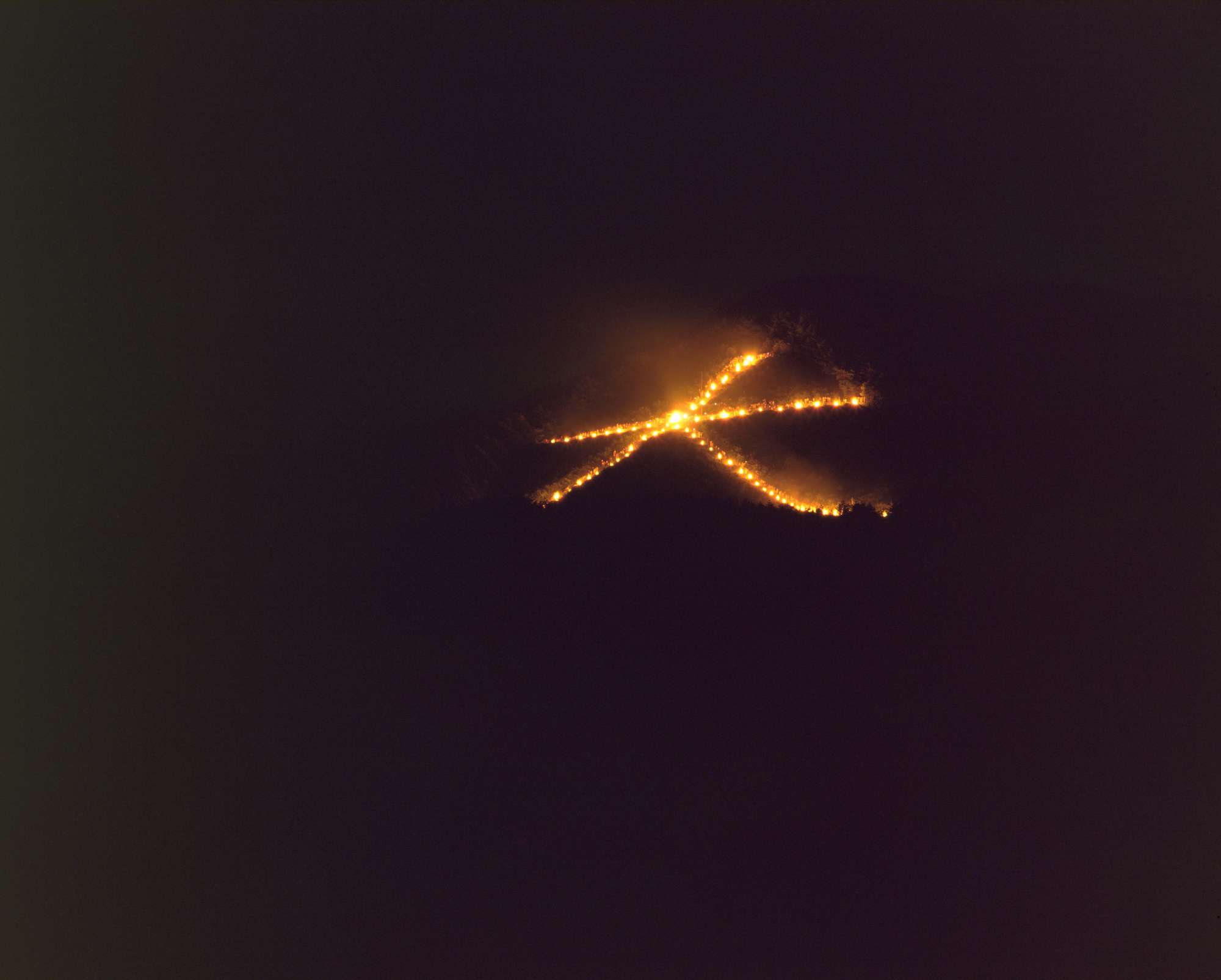
The climax of the famous O-Bon festival, Gozan Fire Festival (京都五山送り火) is famous for its magnificent and enormous bonfires in the shape of various kanji, a torii and a boat on five hillsides in Kyoto, Kyoto Prefecture on August 16. Gozan Fire Festival is said to help ancestral spirits return to the spiritual realm following their few days in the world of the living during O-Bon - thus the name Okuribi (送り火, sending off fire).
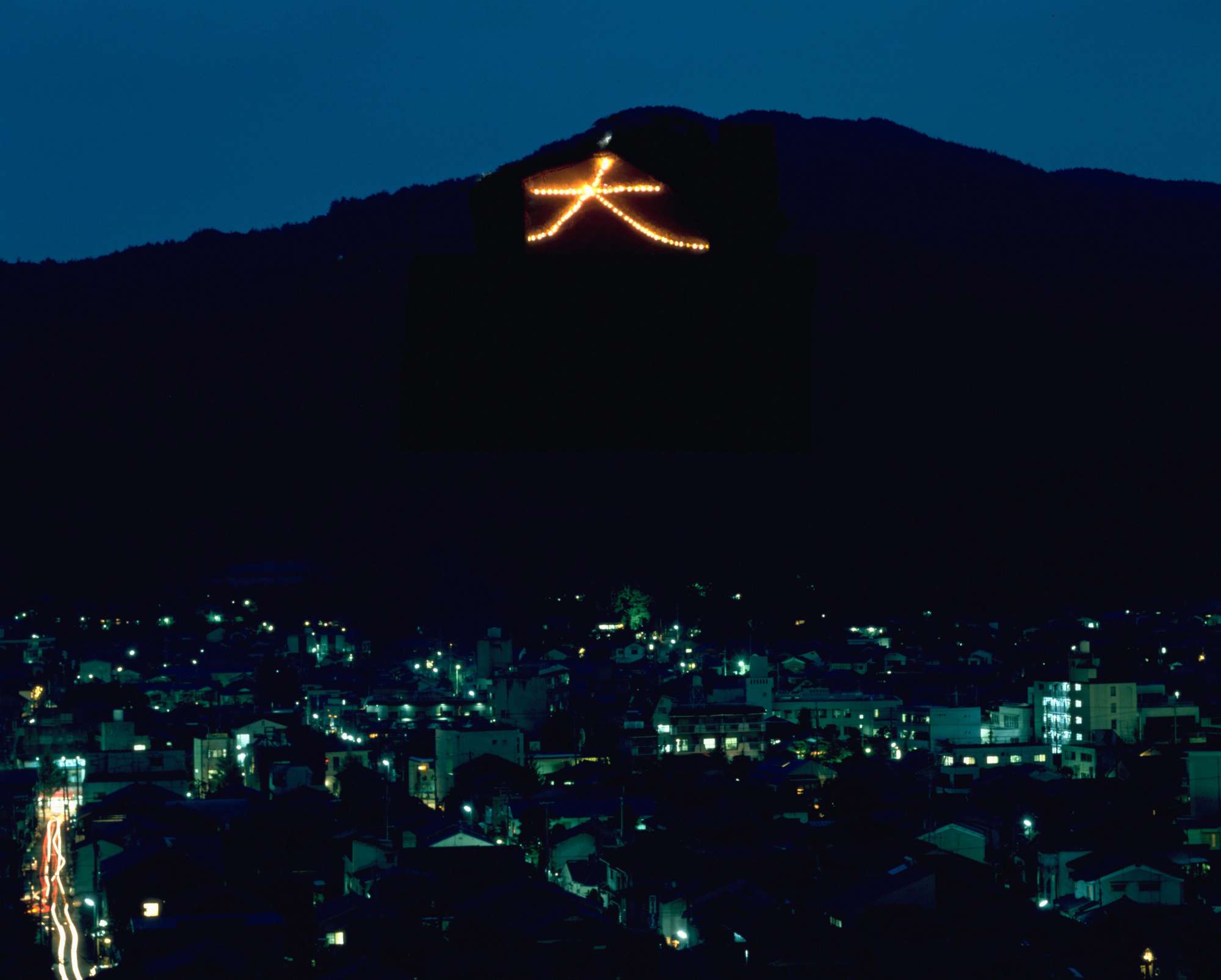
The most famous - and the first to be lit - is the character dai (大), on Kyoto's Daimonji-yama (大文字山) at 8pm. The remaining four fires are then lit at 5-10 minute intervals, each lasting for 30 minutes so that by 8:30pm all five fires can be seen at once!
Yoshida Fire Festival
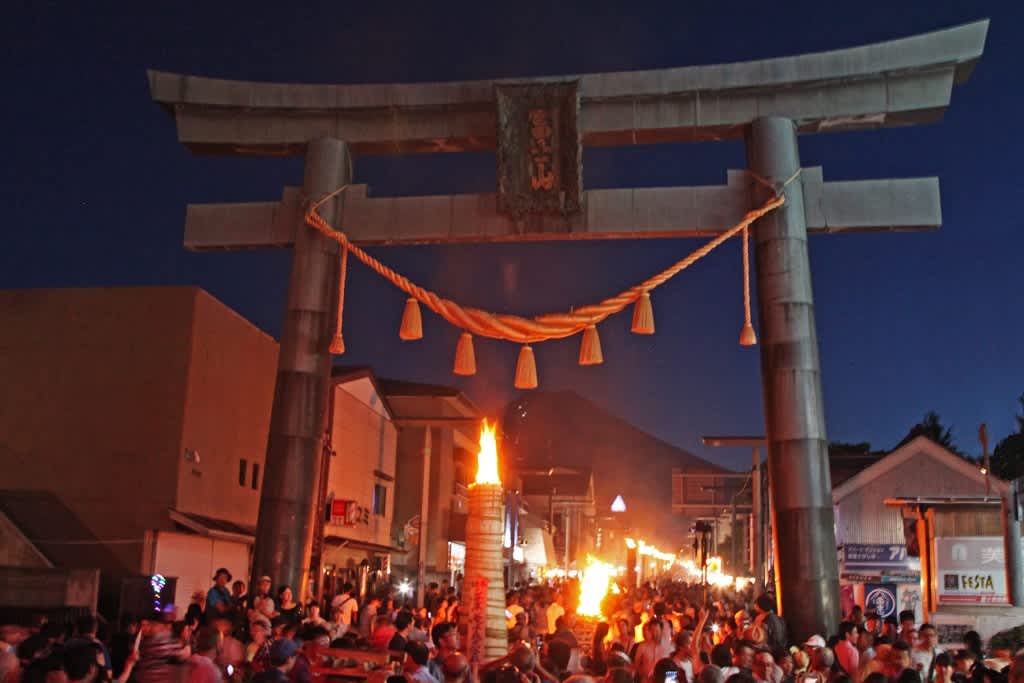
Held August 26-27 at the Kitaguchi Hongu Fuji Sengen Shrine in Fujiyoshida, Yamanashi Prefecture, the Yoshida Fire Festival (吉田の火祭り) is a unique two-day spectacle you don't want to miss.
The 500-year-old festival is based on the story of the Goddess of nearby Mt. Fuji; accused by her husband of having an affair after unexpectedly falling pregnant, the Goddess disproves his doubts by locking herself in a room in Fuji Sengen Shrine and setting it on fire - the child survives, proving the husband to be the father.
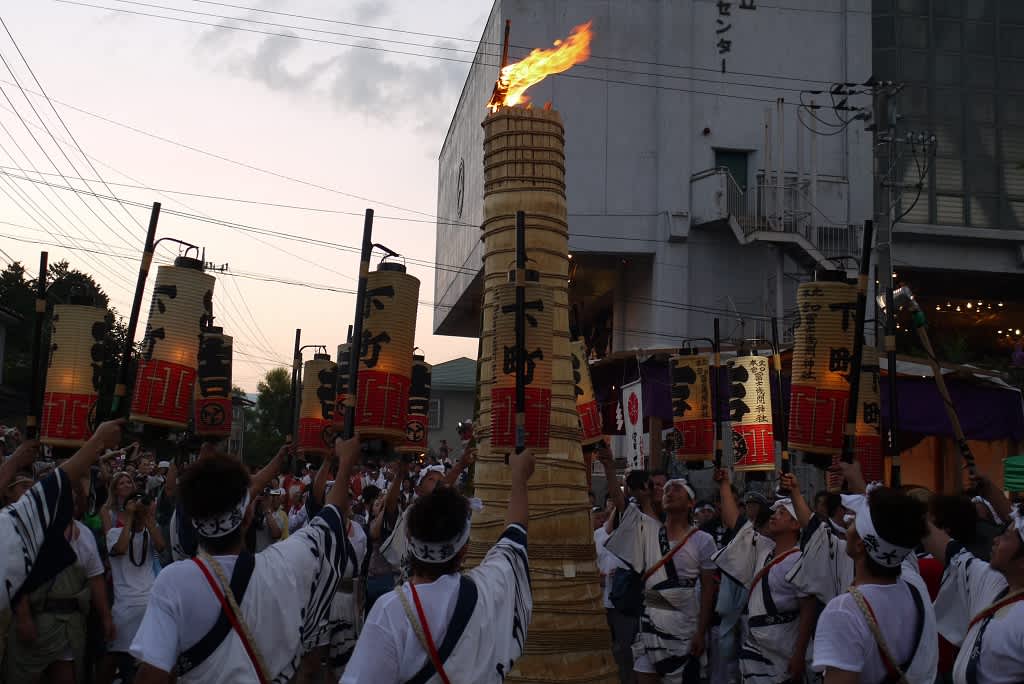
The rituals begin at the Kitaguchi Hongu Fuji Sengen Shrine in the afternoon and in the evening two portable shrines are taken to their resting spot for the night. The locals meanwhile light over 70 3m-high torches, engulfing the town of Fujiyoshida in a sea of fire. The next day the Mt. Fuji-shaped omikoshi endearingly named, "O-yama San" (お山さん, "Mr. Mountain") is rushed about the streets and in a notably rare act, thrown to the ground as a means of appeasement to Mt. Fuji to not erupt during the coming year - be sure to listen out for the thudding throughout the day, or better yet, to witness it! 'Susuki Matsuri' (すすき祭り) officially signals the fire festival's final evening; the sound of taiko drums fills the air and hordes of people rush about the omikoshi like a vortex as it begins to circle the shrine's grounds - onlookers are allowed to join in the surge after the two omikoshi have circled the grounds a certain number of times!
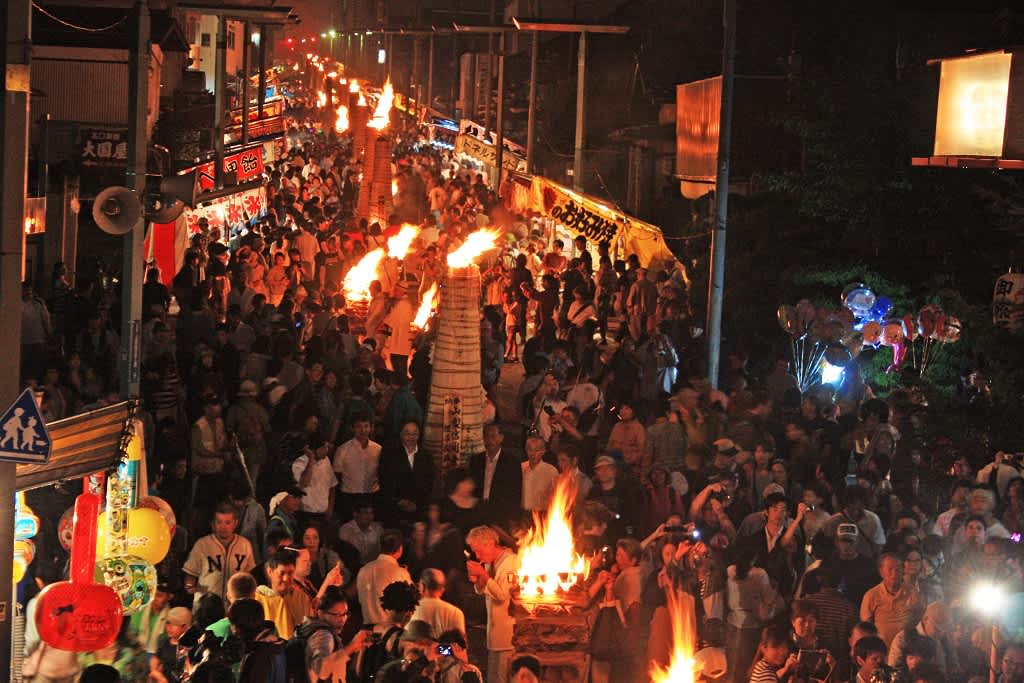
Kurama Fire Festival
The Kurama Fire Festival (鞍馬の火祭り) in the mountainous village of Kurama, Kyoto Prefecture, held on the evening of October 22, honours Yuki Shrine and the spirits that came with it after the shrine was moved from Kyoto to Kurama during a time of war in the early Heian Period (794-1185).
Considered one of Kyoto's "three most eccentric festivals", the Kurama Fire Festival is both dynamic and hot. The procession begins at dusk, when small torches are lit in front of each house and the sound of taiko drums and chanting begins to fill the air. As the parade is also considered a rite of passage for youth, nowadays both boys and girls, children and then teenagers lead the procession. It is the men of the village however that are the focus of the parade, made even more obvious by the minimal-in-nature traditional garb they wear and the giant 80kg torches they carry. A small number of village men also carry omikoshi up the road to the shrine. This is a show of great strength, as the omikoshi are incredibly heavy. At the end of the festival around midnight a giant bonfire is made from the many torches, lighting up the village.
Fushimi Inari Shrine Ohitakisai
Famous for its row of 10,000 or so torii and for presiding as head shrine for over 30,000 Inari Shrines nationwide, the Grand Shrine of Fushimi Inari Taisha in Kyoto, Kyoto Prefecture is home to one of the most spectacular and spiritually-moving fire festivals, the Fushimi Inari Shrine Ōhitakisai (伏見稲荷大火焚き) on November 8. The festival is closely related to autumn and the harvest season; offerings are made to Inari, the kami (神, deity) of foxes, rice, sake, agriculture and industry, and general prosperity to name but a few.
The festival begins with a ritual in the shrine's main hall with offerings of food, sake and prayers, and performances of the sacred kagura (神楽) dance by the shrine's priestesses. Then the fire. Three bonfires are lit in the shrine's courtyard and over 100,000 prayer sticks are thrown into the fire with large, dramatic tosses, "scattering the wishes of shrine visitors into the fire." Speak Japanese? A copy of the purification prayer is passed out in the crowd so that attendees can join in on wishing for good health and fortune for all. And if you don't? Just marvel at the atmosphere, and of course, the fire! Priests also partake in cleansing rituals in front of each fire using water, salt, and sakaki leaves whilst priestesses carrying golden bells intermittently perform the kagura dance until the very last prayer stick is thrown into the fire. This is a festival for all the senses to enjoy.
Taimatsu Akashi
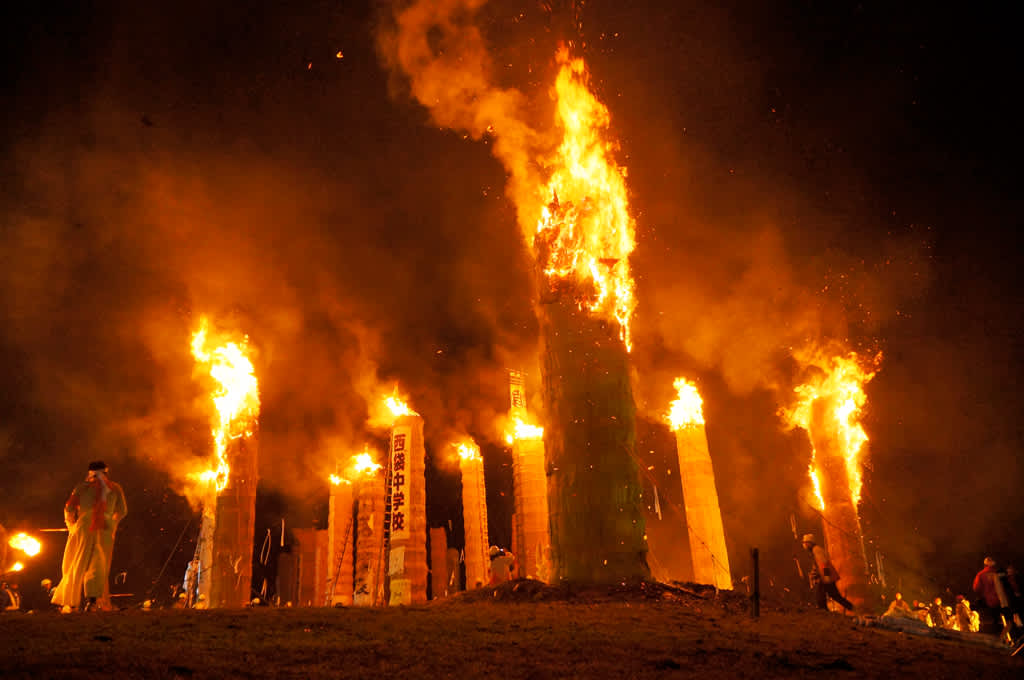
Last but not least is Taimatsu Akashi (松明あかし), one of Japan's top three fire festivals held on the second Saturday of November in Sukagawa, Fukushima Prefecture. Unlike the many other fire festivals we've looked at, this one has more of a somber tone, commemorating the many warriors who died during Masamune Date's attack on the local Sukagawa Castle in 1589.
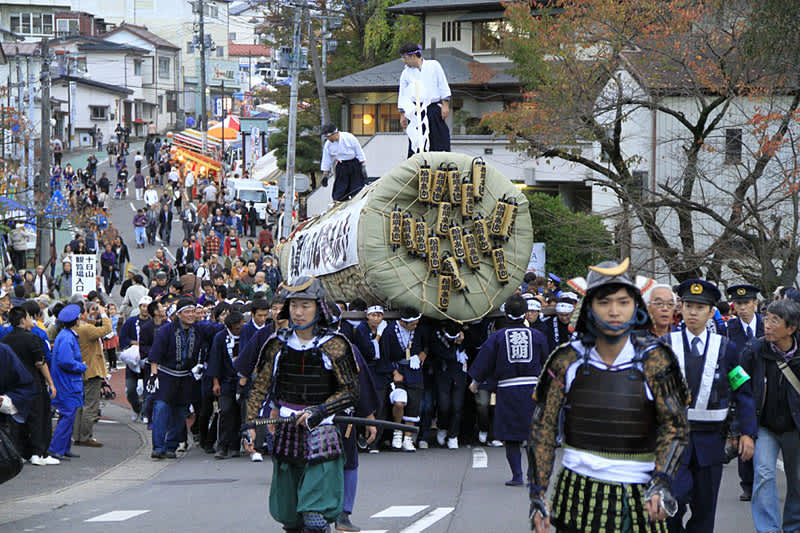
If after reading the above festival summaries you've developed an affinity with enormous flaming torches you'll be thrilled to hear that Taimatsu Akashi begins with a procession of 30 taimatsu (松明, giant torches) - each 10m in length and weighing 3 tons - through the city to Mt. Gorō by a team of 150 or so men, ranging from high school students to 40-year-olds.
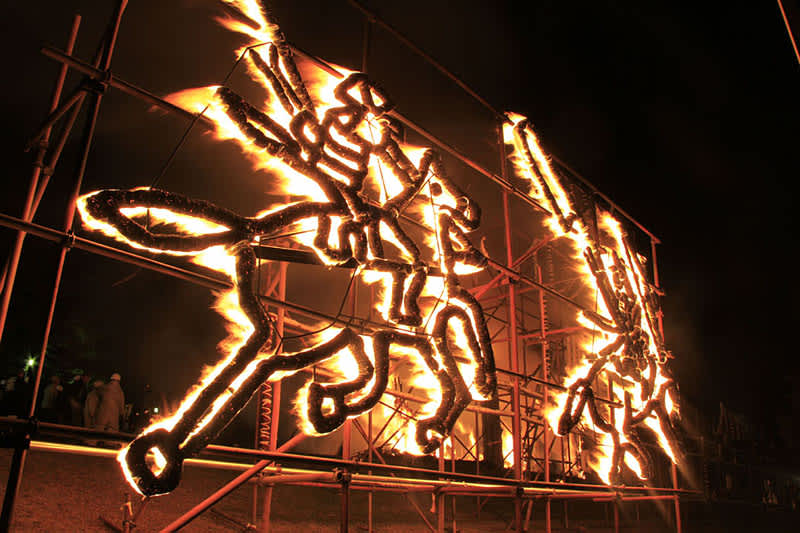
Around 6:30pm these taimatsu are stood up and lit one by one as the sound of taiko drums echo in the empty and darkening sky and the taimatsu's flames and smoke create a truly surreal atmosphere. Want to witness Japanese stoicism in its fullest? Then this is not the festival to miss!
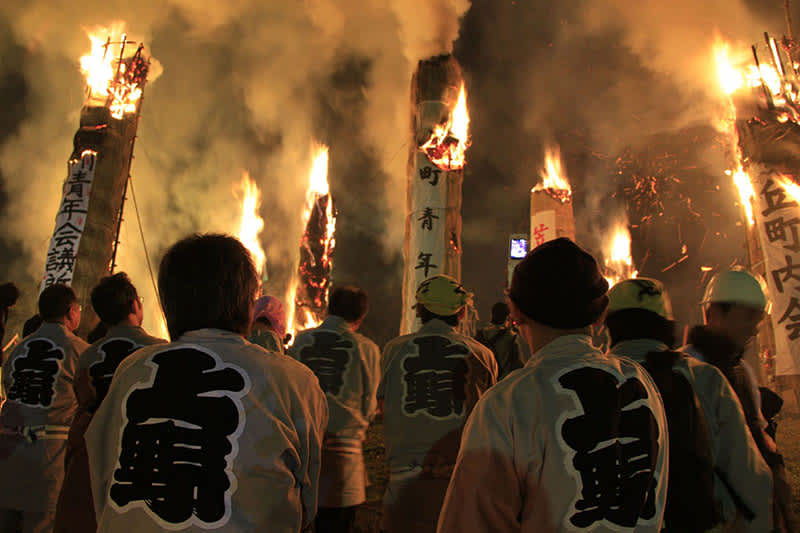
To stay up to date with all the latest happenings in Japan follow us on Facebook and Twitter.


























































